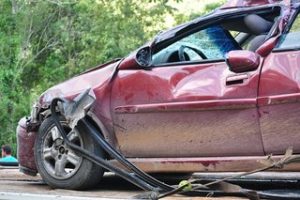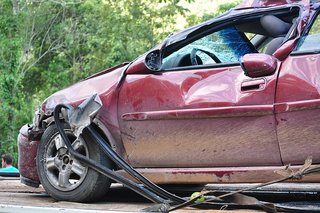What Does It Mean to Be in A No Fault State for Car Insurance?
Free Car Insurance Comparison
Compare Quotes From Top Companies and Save
Secured with SHA-256 Encryption
Natasha McLachlan
Content Writer
Natasha McLachlan is a writer who currently lives in Southern California. She is an alumna of California College of the Arts, where she obtained her B.A. in Writing and Literature. Her current work revolves around auto insurance guides and informational articles. She truly enjoys helping others learn more about everyday, practical matters through her work.
Content Writer
UPDATED: Oct 1, 2020
It’s all about you. We want to help you make the right coverage choices.
Advertiser Disclosure: We strive to help you make confident car insurance decisions. Comparison shopping should be easy. We are not affiliated with any one car insurance provider and cannot guarantee quotes from any single provider. Our partnerships don’t influence our content. Our opinions are our own. To compare quotes from many different companies please enter your ZIP code on this page to use the free quote tool. The more quotes you compare, the more chances to save.
Editorial Guidelines: We are a free online resource for anyone interested in learning more about car insurance. Our goal is to be an objective, third-party resource for everything car insurance-related. We update our site regularly, and all content is reviewed by car insurance experts.
UPDATED: Oct 1, 2020
It’s all about you. We want to help you make the right coverage choices.
Advertiser Disclosure: We strive to help you make confident car insurance decisions. Comparison shopping should be easy. We are not affiliated with any one car insurance provider and cannot guarantee quotes from any single provider. Our partnerships don’t influence our content. Our opinions are our own. To compare quotes from many different companies please enter your ZIP code on this page to use the free quote tool. The more quotes you compare, the more chances to save.
On This Page
If you live in a no-fault state, as far as car insurance is concerned, then this means that your own insurance company will pay a part of, or all of, your medical bills and your lost earnings in the event of a car accident, no matter whose fault the accident was.
So, if you ever wondered who pays in a no-fault state, you got the answer. Now relax and read further for more clarification.
There are a large number of states that follow the no-fault insurance system, including:
- The District of Columbia
- Hawaii
- Florida
- Kentucky
- Kansas
- Michigan
- Massachusetts
- New Jersey
- Minnesota
- New York
- Pennsylvania
- North Dakota
- Utah

Usually, when you make a no-fault claim it goes through the personal injury protection (PIP) provision of your policy. In states that operate under this system, it is mandatory to take out PIP cover as a part of your policy.
There are a few different ways that no-fault cover can operate. Each state sets their own rules. In Kentucky, Pennsylvania, and New Jersey, for example, a vehicle owner has the choice to opt out of the no-fault system when they purchase their coverage.
How Do No-Fault Claims Work?
No fault claims are made to your own automobile insurance company, and they will cover the out of pocket damages that relate to the car accident. That is things like lost earnings, medical bills, etc.
There are limitations to what is covered under the no-fault system. For example, none of the no-fault states will allow you to make a claim on your own insurance for pain and suffering.
You can only make this kind of claim against the at-fault driver, and to do so your medical bills will have to reach a specific level, or your injury will have to be serious enough to allow the claim to be considered outside of the normal no-fault rules. The purpose of these rules is to streamline the way that car accident cases are considered.
Compare quotes from the top car insurance companies and save!
Secured with SHA-256 Encryption
Your Responsibilities Under the No-Fault System
Under the no-fault system, you must cooperate with your insurance company. The usual rules that you may know of from other states would not apply here.

For example, in cases where the fault is considered most people would advise you to avoid talking to the other party’s insurance company as much as possible. With no-fault claims, the law in the state requires you to cooperate with your insurance company.
You may be required by your insurance policy to provide a recorded statement and to attend a medical examination by a physician of the company’s choice. If you fail to do this, then the insurance company could use that as grounds to deny the claim.
An Overview of State Rules
Individual states are allowed to set their own rules, and the rules could change at any time. The following is a list of some no-fault states and the rules that they had at the time of writing.
Before taking out a policy, or making a claim, be sure to confirm the current status of the insurance rules in the state in question, to ensure that you are making the best decision for your circumstances.
Florida:
In Florida, drivers are required to carry $10,000 PIP cover, which will pay if you, your passengers, or an authorized driver that is included on the cover, were to get injured. The PIP applies to your vehicle, rather than specifically to you as a driver. You are also required to carry an additional $10,000 of coverage to pay for damage to the driver of the other vehicle. These requirements are minimums, and it is possible (and usually recommended) to take out additional cover.
Hawaii:
In Hawaii, the minimum required cover is $10,000 which is for PIP, and $10,000 property damage. The state also requires $20,000 per person and $40,000 per accident as the minimum liability coverage. There is also the option for managed care, or PPO, to be purchased in lieu of PIP. Some people find that PPO is more affordable than PPI because it pays for medical expenses but does not include death, lost wages, or interment coverage.
Kansas:
The minimum required coverage is higher in Kansas than in some other states, at $25,000 per person and $50,000 per accident. There is also a requirement for $4,500 medical personal injury cover and $900/month work loss. The personal injury protection is divided up into clear categories, including $25/day in-home care, which is unusual compared to the way that other states manage their cover.
Kentucky:
This is one of only a small handful of states that offers a choice between tort insurance and no-fault insurance. The $10,000 PIP cover is an option, but it is not required. There are thresholds on the claims that drivers can make.
Currently, a driver may only file an injury claim if the cost of their injury exceeds $1,000 or if the injury was serious, is permanent, or causes death. Any drivers who opt out of PIP cover for themselves, are required to purchase guest PIP cover to provide any passengers or pedestrians with the basic benefits of PIP. There is also the option to use buy-back provisions, where the driver has PIP and retains the right to sue for damages themselves. However, drivers who do this pay higher premiums and should be aware that they are giving the other driver the option to sue as well.
Massachusetts:
The state requirements are fairly low, with an $8,000 PIP, and the states PIP coverage paying for the first $2,000 before any health insurance takes effect. There is also a requirement for $5,000 property damage liability, and $20,000/$40,000 for bodily injury reliability, as well as $20,000 / $40,000 for under-insured and uninsured motorist liability. There is the option for additional MedPay insurance to cover funeral expenses or additional medical expenses, but this is not something that drivers usually opt for if they are taking PIP cover unless they are lacking health insurance.
Michigan:
The cover in Michigan is broadly regarded as the most comprehensive out of the no-fault states. The state requires $20,000 / $40,00 bodily injury liability cover, and $10,000 property damage liability coverage. In addition to this, the state requires a $1 million PPI and PIP coverage for work loss and medical expenses. It is, currently, the only state to do this.
Affect Of Deductible On Michigan Mini Tort No-Fault Insurance Claim (important)
Michigan mini tort law is based on the premise that drivers have their own automobile insurance to cover the costs of damage in the event of an accident. It therefore only takes into account any out of pocket expenses that the person not at fault in the accident as incurred such as their insurance deductible.
The maximum amount that can be claimed is therefore limited to $1,000. If the driver at fault has insurance, this amount will be paid by their insurance provider. However, if they are not insured, they will be held personally liable for this amount. However, $1,000 is the maximum amount payable and there are many factors that may affect the actual amount that can be claimed for a deductible.
- Broad Collision coverage will waive a deductible in the event that you are found to be less than 50% responsible for the accident and therefore you will not need to claim for a deductible as an out of pocket expense.
- While in most cases one party is 100% at fault for causing an accident, there are cases where the responsibility and therefore the liability must be shared. For example, if you are found to be 30% responsible for the accident and are claiming for the full $1,000 allowed, you will only receive 70% or $700.
- In the event that the damage to your vehicle is less than the mini tort claim, the court will only award the lower of the two amounts. For example, if your deductible is $1,000 but the damage to your car is valued at $800, you will only receive $800 to repair your vehicle.
- Most standard collision insurance policies carry a deductible of $1,000 or less regardless of whether you are at fault or not. This means that if you are at fault in a collision, you will have to pay your own deductible as well as that of the other driver unless your third party insurance covers their deductible. However, if you are not at fault you can claim for your deductible.
- In the event that the deductible is in excess of $1,000, you will have to pay the surplus from your own pocket. It is not recommended to take an insurance policy that has a deductible in excess of $1,000.
In the event that you do not have insurance, you can still claim for the maximum $1,000 but any additional expenses to repair your vehicle will be your responsibility.
Minnesota:
The minimums in Minnesota are set quite high, at $40,000 PIP with $20,000 for medical expenses. The remaining $20,000 can be used for lost wages and for non-medical expenses. If the driver exceeds the amount allocated under PIP, then they are permitted to make a claim against the at-fault party. There is a requirement of $30,000 for bodily injury liability per person and $10,000 in property damage liability.
New Jersey:
Drivers in New Jersey have the choice between a basic cover and standard cover. Basic cover is the absolute bare minimum mandated by the state, at $5,000 for property damage liability, and $15,000 for PIP. Standard cover tends to be much higher, at $30,000 for bodily injury liability, $5000 for the property, and then additional cover for uninsured, and under-insured motorists to cover bodily injury and property damage.
New York:
In New York, PIP will cover you whether you are a driver, a pedestrian, or a passenger in another person’s car. The amount of cover required is some of the highest out of all of the no-fault states, at $25,000 / $50,000 for bodily injury, $50,000 for PIP cover, and $25,000 / $50,000 for uninsured motorist bodily injury.
North Dakota:
It is possible for a teen of 14 years of age to get a driving permit, and to have a restricted driver’s license at the age of 15 in North Dakota. Insurance for young drivers is expensive, however. North Dakota is a no-fault state that requires the minimum cover of $30,000 PIP for the driver, and that allows the driver to file for more damages against the at-fault driver if required. There is a requirement for $25,000 / $50,000 minimum uninsured/underinsured motorist coverage for bodily injury, and this cover will pay if you are injured by an uninsured or underinsured motorist.
Pennsylvania:
The premiums in Pennsylvania are lower than the premiums in other states. The state requires drivers to purchase the first-party cover for $5,000 for property damage liability, $15,000 / $30,000 for bodily injury liability, and $5,000 cover for first-party benefits. These are the minimums, but it is advisable to take out extra coverage if possible.
Utah:
The cover requirements in Utah are somewhere in the mid-range, at $25,000 / $65,000 for bodily injury liability, $3,000 to cover immediate medical care, state-mandated liability insurance to cover excess medical bills, and $15,000 of property damage liability. Utah is a modified comparative fault state, this means that drivers can sue other drivers for damage if they are ‘more at fault’ than they were. The court awards punitive damages if an insurance company denies a claim in bad faith.
Final Thoughts
As you can see, the way insurance works vary massively from state to state. It is a good idea to do your homework to make sure that you have not just the bare minimum of cover, but that you have enough cover for your own personal circumstances.

Compare quotes from the top car insurance companies and save!
Secured with SHA-256 Encryption
Natasha McLachlan
Content Writer
Natasha McLachlan is a writer who currently lives in Southern California. She is an alumna of California College of the Arts, where she obtained her B.A. in Writing and Literature. Her current work revolves around auto insurance guides and informational articles. She truly enjoys helping others learn more about everyday, practical matters through her work.
Content Writer
Editorial Guidelines: We are a free online resource for anyone interested in learning more about car insurance. Our goal is to be an objective, third-party resource for everything car insurance-related. We update our site regularly, and all content is reviewed by car insurance experts.

